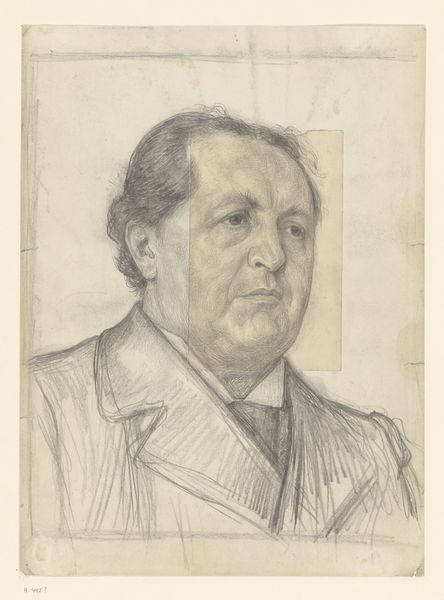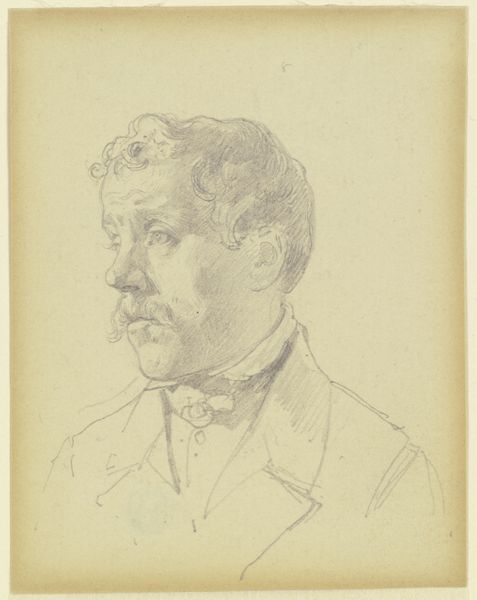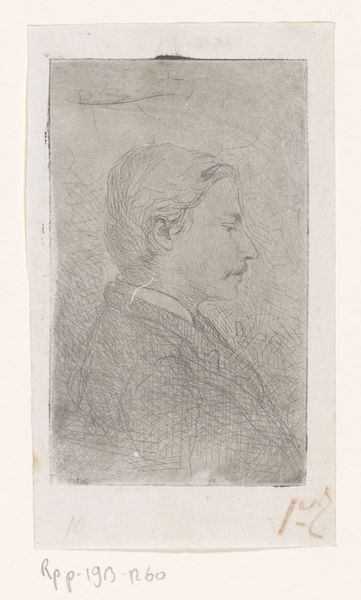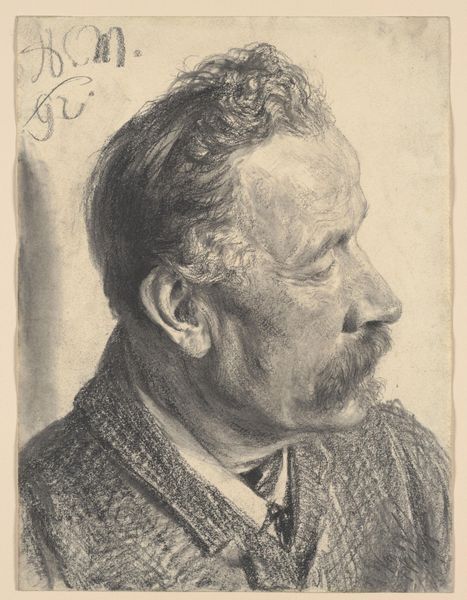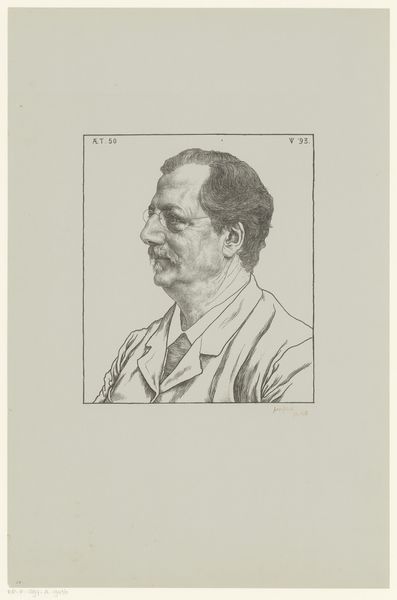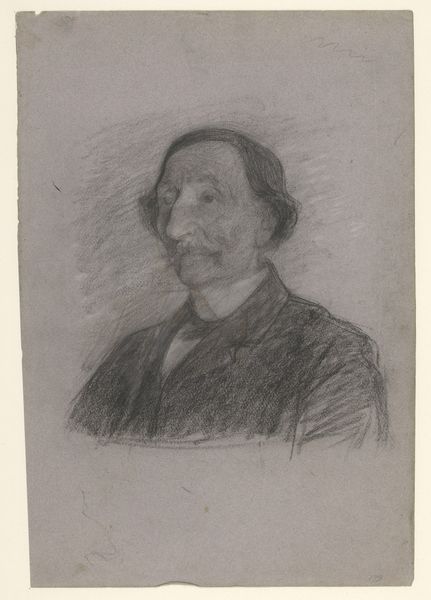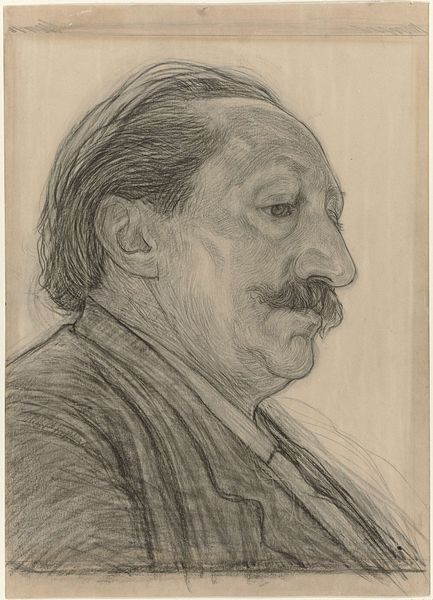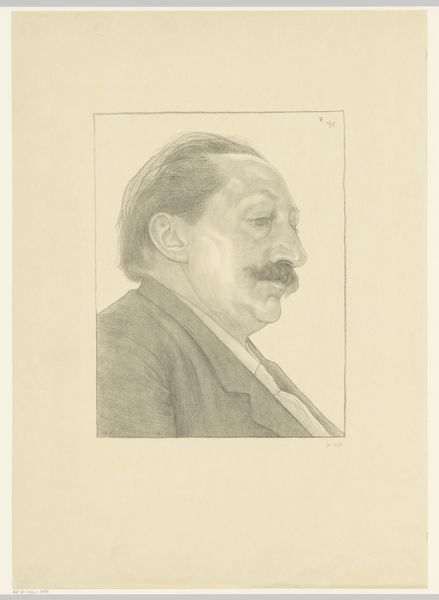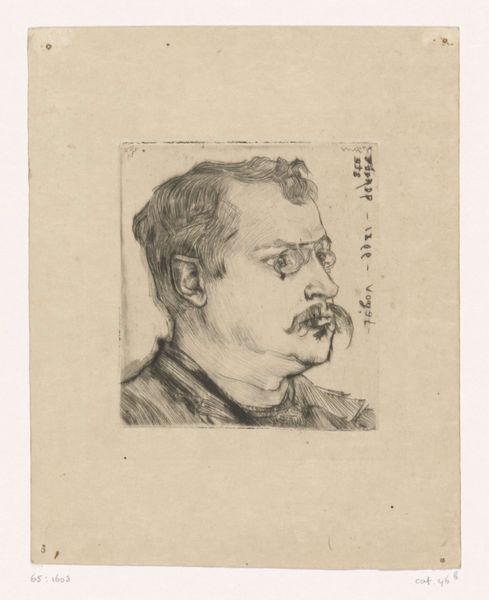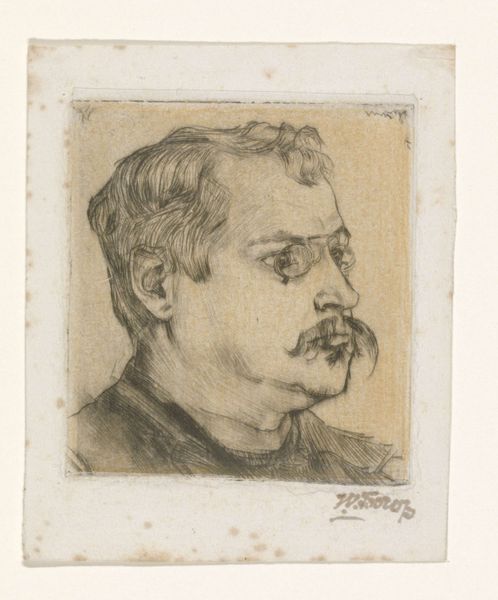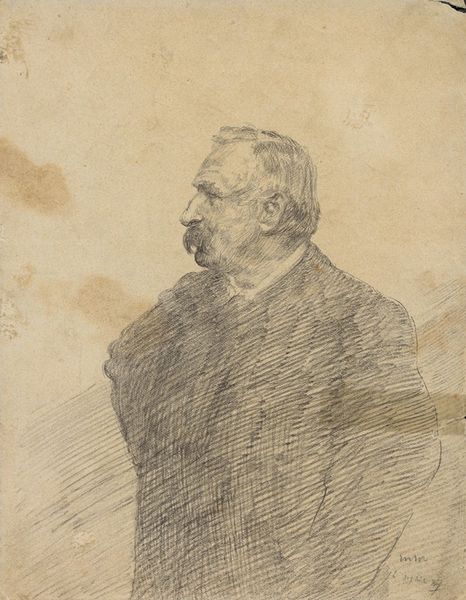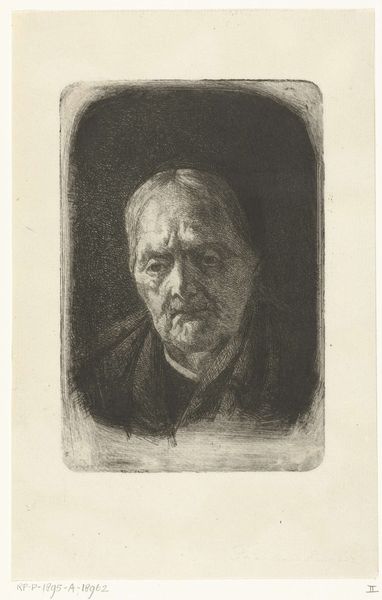
drawing, paper, pencil
#
portrait
#
pencil drawn
#
drawing
#
toned paper
#
facial expression drawing
#
light pencil work
#
pencil sketch
#
paper
#
personal sketchbook
#
portrait reference
#
pencil drawing
#
pencil
#
portrait drawing
#
pencil work
#
realism
Dimensions: height 308 mm, width 226 mm
Copyright: Rijks Museum: Open Domain
Editor: Here we have Jan Veth’s portrait of Charles Boissevain, made sometime between 1874 and 1925. It's a pencil drawing on paper, currently residing at the Rijksmuseum. It feels like a very intimate, almost like a stolen glance at a prominent figure. How do you read this piece, in terms of its historical moment? Curator: That's a wonderful initial response. The "stolen glance" aspect hints at the complex power dynamics inherent in portraiture of that era. Boissevain was a very influential journalist and editor during a time of significant social and political upheaval in the Netherlands. How does knowing this information impact your understanding? Editor: It definitely shifts my perspective. Knowing he was a powerful figure, the portrait seems less about intimacy and more about capturing a sense of his authority. There's a reserved quality, even a certain guardedness in his expression. Curator: Exactly! Think about the role of the press during that period. Boissevain’s writings would have shaped public opinion on issues ranging from colonialism to class conflict. Does Veth’s seemingly straightforward portrait subtly reinforce or perhaps challenge those existing power structures? What visual cues make you say so? Editor: Well, his gaze is averted, but his features are sharp. The artist uses tight line work which conveys that sense of intellect and rigor. This contrasts the man’s kind features, particularly around his eyes. Curator: Precisely. The seemingly simple act of portraying an individual becomes a negotiation, a dialogue, between artist, sitter, and audience, laden with societal expectations and potentially subversive undertones. Considering issues around race and gender, how might Boissevain’s position have influenced or been influenced by the existing dominant narratives? Editor: It’s fascinating to consider the social and political currents running beneath what seems like a simple drawing. I'm seeing this portrait in a whole new light now! Curator: And I'm seeing how this artwork sparks questions on individual identity in relationship to power structures. Thanks for this dialogue.
Comments
No comments
Be the first to comment and join the conversation on the ultimate creative platform.
